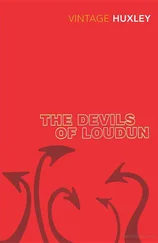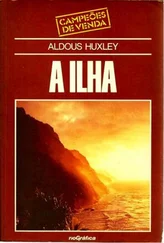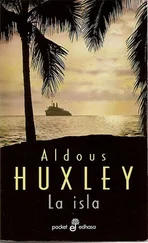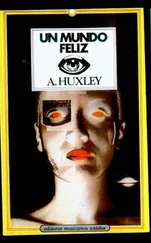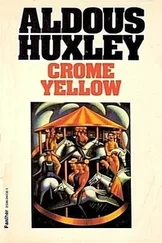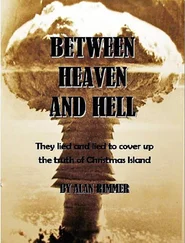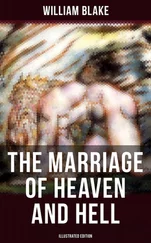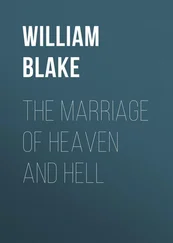Bright, pure colours are characteristic of the Other World. Consequently works of art painted in bright, pure colours are capable, in suitable circumstances, of transporting the beholder's mind in the direction of its antipodes. Bright pure colours are of the essence, not of beauty in general, but only of a special kind of beauty, the visionary. Gothic churches and Greek temples, the statues of the thirteenth century after Christ and of the fifth century before Christ—all were brilliantly coloured.
For the Greeks and the men of the Middle Ages, this art of the merry–go–round and the wax–work show was evidently transporting. To us it seems deplorable. We prefer our Praxiteleses plain, our marble and our limestone au naturel . Why should our modern taste be so different, in this respect, from that of our ancestors? The reason, I presume, is that we have become too familiar with bright pure pigments to be greatly moved by them. We admire them, of course, when we see them in some grand or subtle composition; but in themselves and as such, they leave us untransported.
* * * * *
Sentimental lovers of the past complain of the drabness of our age and contrast it unfavourably with the gay brilliance of earlier times. In actual fact, of course, there is a far greater profusion of colour in the modern than in the ancient world. Lapis lazuli and Tyrian purple were costly rarities; the rich velvets and brocades of princely wardrobes, the woven or painted hangings of mediaeval and early modern houses, were reserved for a privileged minority.
Even the great ones of the earth possessed very few of these vision–inducing treasures. As late as the seventeenth century, monarchs owned so little furniture that they had to travel from palace to palace with wagon–loads of plate and bedspreads, of carpets and tapestries. For the great mass of the people there were only homespun and a few vegetable dyes; and, for interior decoration, there were at best the earth colours, at worst (and in most cases) 'the floor of plaster and the walls of dung.'
At the antipodes of every mind lay the Other World of praeternatural light and praeternatural colour, of ideal gems and visionary gold. But before every pair of eyes was only the dark squalor of the family hovel, the dust or mud of the village street, the dirty whites, the duns and goose–turd greens of ragged clothing. Hence a passionate, an almost desperate, thirst for bright, pure colours; and hence the overpowering effect produced by such colours whenever, in church or at court, they were displayed. Today the chemical industry turns out paints, inks and dyes in endless variety and enormous quantities. In our modern world there is enough bright colour to guarantee the production of billions of flags and comic strips, millions of stop signs and tail lights, fire engines and Coca–Cola containers by the hundred thousand, carpets, wallpapers and non–representational art by the square mile.
Familiarity breeds indifference. We have seen too much pure, bright colour at Woolworth's to find it intrinsically transporting. And here we may note that, by its amazing capacity to give us too much of the best things, modern technology has tended to devaluate the traditional vision–inducing materials. The illumination of a city, for example, was once a rare event, reserved for victories and national holidays, for the canonization of saints and the crowning of kings. Now it occurs nightly and celebrates the virtues of gin, cigarettes and toothpaste.
In London, fifty years ago, electric sky signs were a novelty and so rare that they shone out of the misty darkness 'like captain jewels in the carcanet.' Across the Thames, on the old Shot Tower, the gold and ruby letters were magically lovely— une féerie . Today the fairies are gone. Neon is everywhere and, being everywhere, has no effect upon us, except perhaps to make us pine nostalgically for primeval night.
Only in floodlighting do we recapture the unearthly significance which used, in the age of oil and wax, even in the age of gas and the carbon filament, to shine forth from practically any island of brightness in the boundless dark. Under the searchlights Notre–Dame de Paris and the Roman Forum are visionary objects, having power to transport the beholder's mind towards the Other World. [3] See Appendix III.
Modern technology has had the same devaluating effect on glass and polished metal as it has had on fairy lamps and pure, bright colours. By John of Patmos and his contemporaries walls of glass were conceivable only in the New Jerusalem. Today they are a feature of every up–to–date office building and bungalow. And this glut of glass has been paralleled by a glut of chrome and nickel, of stainless steel and aluminium and a host of alloys old and new. Metal surfaces wink at us in the bathroom, shine from the kitchen sink, go glittering across country in cars and trains.
Those rich convex reflections, which so fascinated Rembrandt that he never tired of rendering them in paint, are now the commonplaces of home and street and factory. The fine point of seldom pleasure has been blunted. What was once a needle of visionary delight has now become a piece of disregarded linoleum.
* * * * *
I have spoken so far only of vision–inducing materials and their psychological devaluation by modern technology. It is time now to consider the purely artistic devices, by means of which vision–inducing works have been created.
Light and colour tend to take on a praeternatural quality when seen in the midst of environing darkness. Fra Angelico's Crucifixion at the Louvre has a black background. So have the frescoes of the Passion painted by Andrea del Castagno for the nuns of Santa Apollonia at Florence. Hence the visionary intensity, the strange transporting power of these extraordinary works. In an entirely different artistic and psychological context the same device was often used by Goya in his etchings. Those flying men, that horse on a tightrope, the huge and ghastly incarnation of Fear—all of them stand out, as though floodlit, against a background of impenetrable night.
With the development of chiaroscuro, in the sixteenth and seventeenth centuries, night came out of the background and installed itself within the picture, which became the scene of a kind of Manichean struggle between Light and Darkness. At the time they were painted these works must have possessed a real transporting power. To us, who have seen altogether too much of this kind of thing, most of them seem merely theatrical. But a few still retain their magic. There is Caravaggio's Entombment , for example; There are a dozen magical paintings by Georges de Latour; [4] See Appendix IV.
there are all those visionary Rembrandts where the lights have the intensity and significance of light at the mind's antipodes, where the darks are full of rich potentialities waiting their turn to become actual, to make themselves glowingly present to our consciousness.
In most cases the ostensible subject–matter of Rembrandt's pictures is taken from real life or the Bible—a boy at his lessons or Bathsheba bathing; a woman wading in a pond or Christ before His judges. Occasionally, however, these messages from the Other World are transmitted by means of a subject drawn, not from real life or history, but from the realm of archetypal symbols. There hangs in the Louvre a Méditation du Philosophe , whose symbolical subject–matter is nothing more nor less than the human mind, with its teeming darknesses, its moments of intellectual and visionary illumination, its mysterious stairways winding downwards and upwards into the unknown. The meditating philosopher sits there in his island of inner illumination; and at the opposite end of the symbolic chamber, in another, rosier island, an old woman crouches before the hearth. The firelight touches and transfigures her face, and we see, concretely illustrated, the impossible paradox and supreme truth—that perception is (or at least can be, ought to be) the same as Revelation, that Reality shines out of every appearance, that the One is totally, infinitely present in all particulars.
Читать дальше

